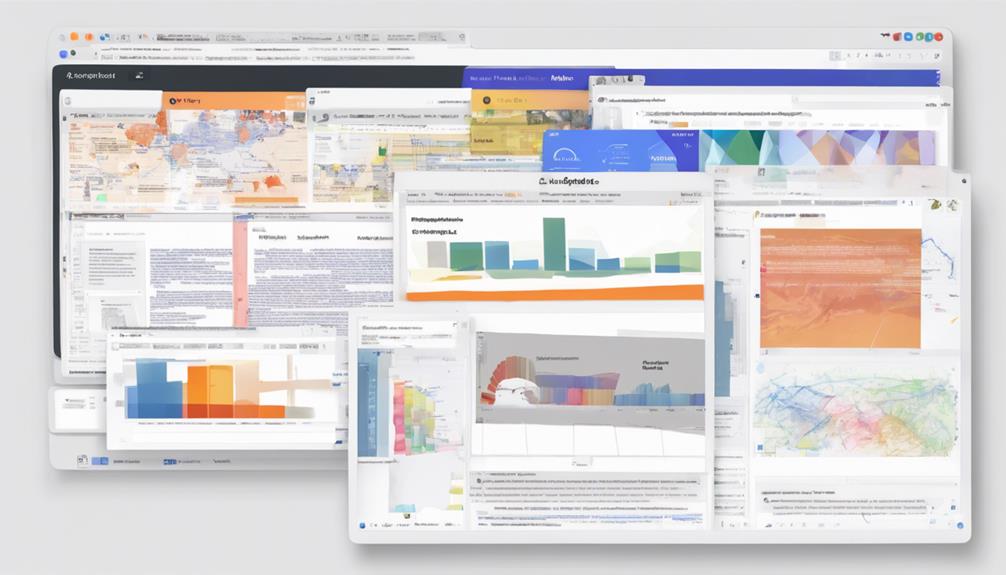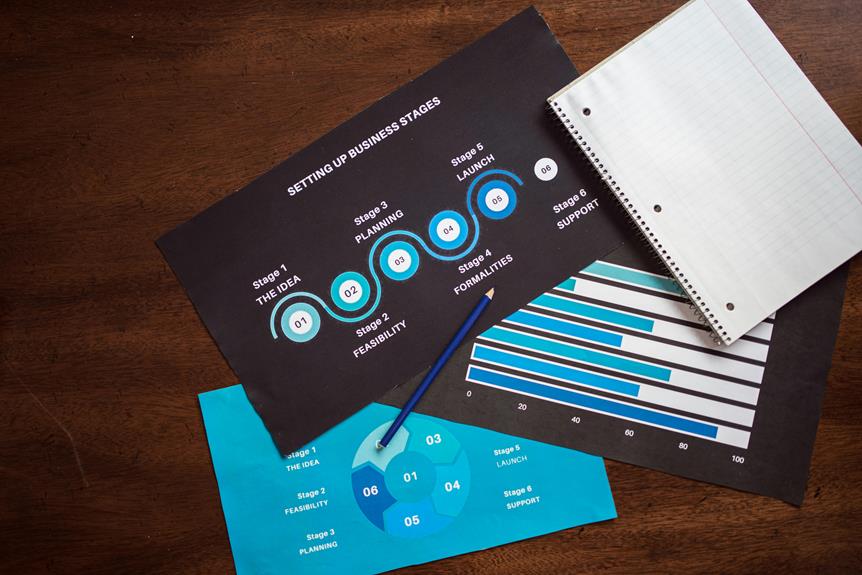When it comes to understanding competitor on-page SEO, there are three essential strategies you should focus on. Start by examining how they utilize keywords, ensuring you take note of both primary and long-tail variations. Then, move on to scrutinize their content structure, paying attention to headings and the clarity of their text. Finally, don't overlook the importance of meta tags and descriptions. By digging into these areas, you'll uncover valuable insights that could give you an edge. But how exactly do you apply these findings to boost your own site's performance?
Evaluate Keyword Usage
When analyzing competitor on-page SEO, evaluating keyword usage is critical to understanding their strategic approach. By scrutinizing how competitors employ keywords, you gain insights into their target audience and content priorities.
Start by identifying high-ranking competitor pages and examine their primary and secondary keywords. Use tools like Ahrefs or SEMrush to extract this data efficiently. These platforms provide a detailed view of keyword frequency, density, and their position within the content.
Focus on keyword placement within key HTML elements. Analyze title tags, meta descriptions, headers, and image alt texts. Competitors often place primary keywords in these areas because search engines prioritize them.
Evaluate whether their keyword usage aligns with search intent and if there are long-tail variations that might offer opportunities for differentiation. Pay attention to keyword density but avoid over-optimization, which can lead to keyword stuffing.
Analyze competitors' keyword usage trends over time. Are they consistently updating their content to reflect changing keyword priorities? This can signal their awareness of evolving search behaviors and algorithm updates.
Additionally, assess the semantic relevance of keywords. Competitors may use latent semantic indexing (LSI) keywords to enhance content depth and relevance. Identify these semantically related terms and consider incorporating them into your own strategy to improve context and coverage.
Analyze Content Structure

A well-structured content layout can significantly enhance the user experience and search engine performance of a webpage. When analyzing competitor on-page SEO, scrutinize how they organize their content. The structure should not only facilitate easy navigation but also highlight the most crucial information effectively. Look for strategic use of headings, subheadings, bullet points, and paragraphs. These elements break up text, making it more digestible and engaging.
To gain insight into your competitor's content structure, here's a simple analysis framework:
| Element | Purpose | Example |
|---|---|---|
| Headings (H1-H6) | Organize content hierarchy | H1: Main Topic, H2: Subtopic, H3: Details |
| Paragraphs | Convey detailed information clearly | Short, concise paragraphs with a single idea focus |
| Bullet Points | Highlight lists or key points | List of benefits, features, or steps |
| Images/Media | Enhance understanding and engagement | Infographics, charts, videos to support text |
With a clear hierarchy using headings (H1 for the main topic, H2 for subtopics), search engines can more easily decipher the page's structure and relevance. Short paragraphs with a single idea improve readability. Bullet points effectively present lists, making information scannable. Meanwhile, images and other media elements provide visual support, making content more engaging.
Conduct a thorough review of these elements on competitor sites. Identify patterns or strategies they employ that you can incorporate or improve upon in your own content. By understanding and optimizing content structure, you can create a more intuitive experience for users and a more favorable one for search engines, giving you a competitive edge.
Examine Meta Tags and Descriptions

Meta tags and descriptions are critical components of on-page SEO that significantly influence how search engines interpret and rank a webpage. When examining your competitor's meta tags, focus on their title tags, which are pivotal for conveying the page's core content to search engines and potential visitors. These tags often determine the first impression in search results, so you must analyze how competitors craft their titles to captivate users and employ strategic keywords.
While inspecting meta descriptions, evaluate how effectively your competitors are using this snippet to entice clicks. Although meta descriptions don't directly impact rankings, a compelling description can boost click-through rates (CTR), sending positive signals to search engines.
Here's how you can strategically assess and leverage competitor meta tags and descriptions:
- Title Length and Structure: Check if competitors keep titles within the recommended 50-60 characters to avoid truncation.
- Keyword Placement: Analyze the placement of primary keywords in the title and description to understand their strategic prioritization.
- Emotional Appeals and Calls to Action: Identify whether emotional triggers or clear calls to action are employed to drive engagement.
- Unique Selling Proposition (USP): Look for mentions of USPs in descriptions that differentiate a competitor's offering.
- SERP Features Utilization: Observe if competitors are utilizing structured data to enhance visibility with rich snippets or featured snippets.
Harnessing this data-driven approach will provide you with actionable insights to refine your own on-page SEO strategy, optimizing your meta tags and descriptions to outperform competitors and capture your audience's attention.
Conclusion
By focusing on these three strategies—keyword usage, content structure, and meta tags—you can gain a competitive edge in on-page SEO. Imagine a company like "TechGear," which saw a 30% increase in organic traffic after analyzing competitors' long-tail keywords and optimizing their meta descriptions for emotional appeal. Use data-driven insights to fine-tune your approach, and you'll unlock new opportunities for growth, outperforming competitors in search engine rankings and driving more targeted traffic to your site.


